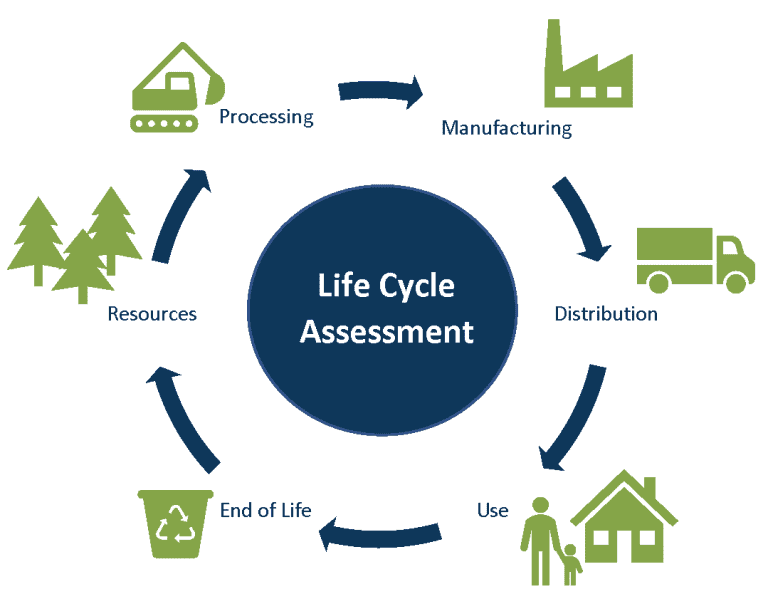Cradle to Grave
Life cycle assessment is a process of scientific investigation that explores the whole-of-life environmental impacts of a product. It is conducted to get a better understanding of the product’s hidden environmental impacts. Some things to think about are:
- Material extraction: Where did the materials come from?
- Manufacturing: What was the process of construction- of creating the product from the raw materials?
- Packaging and transport: How is it packaged and transported from place of manufacturing to point of sale?
- Use: what is the life span and use of the product? Does it take energy to use?
- End of Life: How is the product handled at the end of life? Is it disposable? Is it Recyclable? is it reusable?
Pick a durable household product, something that gets a lot of consistent use. Spend time researching it and analyzing it. How is it made? How does the process start? How does it end? How long does it last? Examine the steps of its lifecycle from extraction to disposal:
- What resources are extracted to make it?
- How does the extraction process impact the environment and nearby communities?
- Where is it manufactured?
- Is it manufactured in one factory or does the raw resource need to be processed before the product is made?
- How is it packaged?
- Where did you buy it?
- How far did it travel from where it was made?
- What is the quality of the product?
- How long will it last?
- What will happen to it when you are done with it? Can it be recycled?
- How long will it be in a landfill?
Map out the product life cycle visually in a way that is easy to comprehend. Try and identify as many details as possible around its use of material resources, its deterioration, its birth, from cradle to grave and try and include them in a way that is accessible and digestible so that it can easily be shared.
If you have time you can make a flow chart, a drawing, a short video, or a story about the product you chose!

You must be logged in to post a comment.